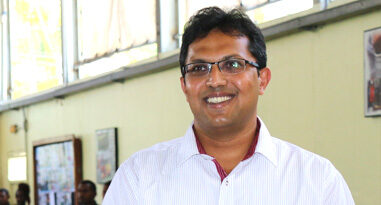From May 10 to 16, 29 volunteers embarked on a medical mission trip to Papua New Guinea. They departed from Sydney and Brisbane, arriving in Port Moresby after a five-hour flight, carrying with them 1000 kilograms of supplies. The team consisted of medical personnel, a hospitality team, an educational team, and a maintenance team.
The first impression of Papua New Guinea was that of a warm and humid country near the equator. We had a brief opportunity to visit Vadavada, a nearby slum. It was home to many children and families living in poverty. We learned that the government had cut off the area's water supply, accusing residents of wasting it. Caritas School ran a small classroom there to offer basic education to the children. Some of those children and even a few teachers lived in the community. “It feels like the Lord has invited us to a new world,” reflected one of our volunteers. Indeed, coming from Sydney, it truly was a new and humbling reality.
On our first day, we focused on settling in and preparing for the medical work that would begin the next day. Caritas Technical Secondary School, operated by the Caritas Sisters, had a well-built gymnasium where we could set up our clinic. The local primary school had serious electrical issues. A woodworking team needed materials to fix a broken mould used for making desks. And there were far more people in need of medical care than we had expected.
The second day was a day of service and we discovered that our original plans didn’t match the urgent needs we encountered. When we opened the clinic, 200 people were already seated, waiting. We treated around 170 patients but had to turn several away who waited over five hours.
By the third day, we improved our system and managed 250 patients. Our medical team included a GP, dermatologist, optometrist, chiropractor, and physiotherapist. The education team began cultural sessions with local students on the fourth day. In the meanwhile, over 450 people were already waiting. That was more than we could see in a day. So over 200 had to be turned away. It was devastating to know someone was sick but be forced to send them away.
Sadly, several volunteers developed sudden stomach pain and diarrhoea on the 5th day. They were diagnosed as gastroenteritis, so we quickly separated bathrooms, reduced clinic services, and rested the sick volunteers. Despite the reduced team, we treated over 300 people again.
On our final day, the doctors had already left and we focused on wrapping up our remaining projects. The electrical work at the primary school was nearly finished, the desk mold was repaired, and carpenters now need to complete production. Fatigue, exhausted and frustrated, but we have completed our mission.
In five days, we treated over 1,400 patients, made more than 200 desks, built 10 library shelves, and completed electrical repairs at the school. Looking back, the mission was hard but deeply joyful and fulfilling. We brought light to someone’s life, gave children a place to study, and offered hope for a better future. “Indeed, coming from Sydney, it truly was a new and humbling reality.”



